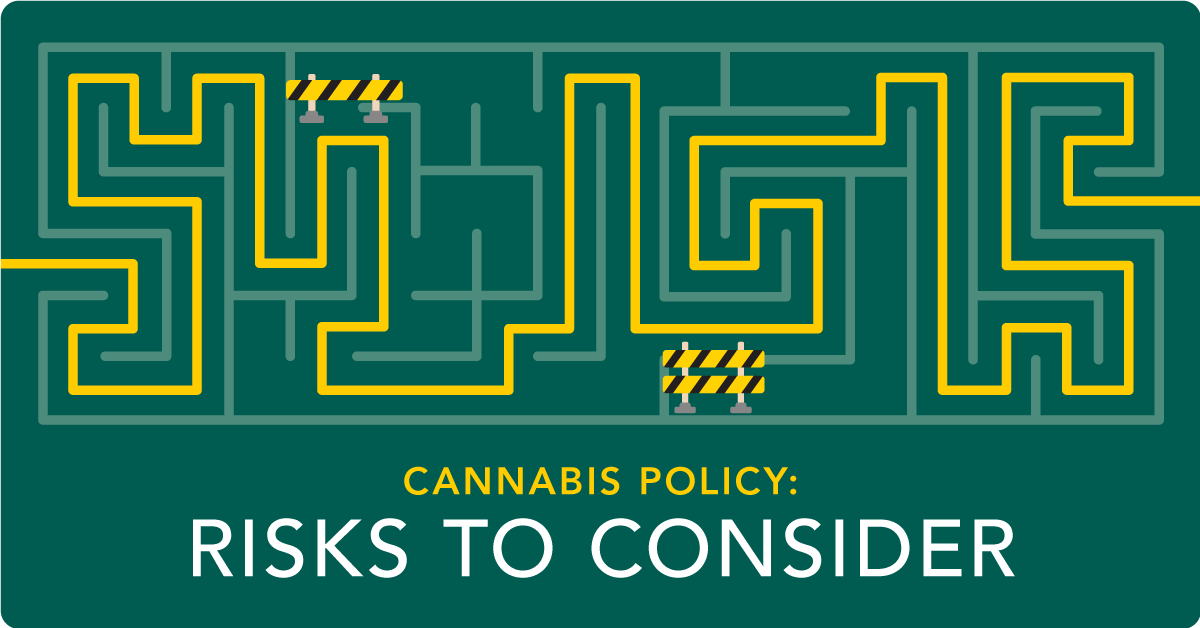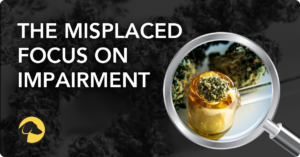
Risks to Consider When Modernizing Workplace Cannabis Testing Policies
Before cannabis legalization, organizations could create workplace cannabis testing policies centered around zero-tolerance as the drug’s use was uniformly illegal. Now that more than 185 million Americans have access to legal cannabis, policies aren’t as straightforward to navigate.1 Many companies feel stuck between a rock and a hard place: continue with zero-tolerance policies and risk employment lawsuits and staffing shortages, or drop those policies and put their employees, security, and reputation at risk.
In response to this challenging environment, some organizations have reduced or even discontinued their cannabis testing efforts. These decisions were made, in part, because legacy testing methods – including oral fluid, urine, and hair – may present a greater chance of returning positive results because their extended detection windows have little to do with recent use.
While removing THC from drug testing panels may solve some problems for employers, it creates new ones in the areas of workplace safety and performance and may leave a gaping hole in a company’s risk mitigation strategy.
RISKS IN THE ERA OF CANNABIS LEGALIZATION
A 2021 National Safety Council survey found a majority of companies that eliminated cannabis testing reported an increase in workplace incidents.2 This correlation between cannabis use and workplace incidents can cost employers millions of dollars over time.
In addition to dropping cannabis testing, narrowing testing to a specific employee function may make organizations increasingly vulnerable to risks. Excluding those in non-traditional safety-sensitive roles from cannabis testing may create an imbalance in fairness within the workforce. It also ignores other potential risks, such as errors and mistakes, unfair employment practices, or cyberattacks.
As a result, it may be time to redefine what positions are considered safety-sensitive. Consider what may be a bigger risk to your company: an incident with a forklift driver, a design error by your engineer, or your CFO responding to a phishing email. Mistakes resulting from drug use by employees not traditionally defined as safety-sensitive can certainly pose risks for employers, yet they are less likely to be tested after they have been hired.3
Let’s dig into that last example a little further. The potential of a cyberattack is one of the most significant threats to businesses across all industries. A reported 82% of the breaches organizations experience result from human involvement, including phishing, misuse, or stolen credentials.2 And although many employees are vigilant about reporting suspicious activities, using cannabis during the workday can reduce alertness, diminish attention to detail, and create unnecessary vulnerabilities for organizations. In 2022, a single data breach was estimated to cost an average of more than $9 million in the United States.4 Beyond the immediate financial risk, it’s also important to acknowledge incidents like this may negatively impact a company’s brand reputation and consumer confidence.
THE PURPOSE OF WORKPLACE CANNABIS TESTING POLICIES
In the era of cannabis legalization, and in light of these aforementioned risks, organizations must consider expanding their workplace cannabis testing policies to apply to all employees.
Since there is no longer a zero-tolerance, one-size-fits-all cannabis policy employers can rely on, employers may want to concentrate on the purpose of their drug testing programs. Organizations can take a proactive rather than reactive approach by creating policies that prioritize deterring workday cannabis use, and not just on detecting use. This means establishing consequences for cannabis use during the workday and backing policies with a solid plan for testing.
Here are additional elements to consider when evaluating workplace cannabis testing policies:
- How will you adapt policies to include recent cannabis use?
- When will you test employees?
- What will happen if an employee tests non-negative for THC?
- If previously removed, how can cannabis testing be reinstated?
- How can you educate employees about new policies?
MODERNIZING WORKPLACE CANNABIS TESTING POLICIES
A drug testing policy is most effective at deterring workplace cannabis use when it’s backed by a testing method that can ensure policy compliance. But how can employers accurately differentiate risky workday use from off-the-job cannabis use?
Traditional cannabis testing methods – including oral fluid, urine, and hair – can detect use that occurred days, weeks, or even months in the past. With these tests, someone who used cannabis on the weekend may test positive on Monday’s drug test. This scenario opens the door to a complex process and possible lawsuits since it’s impossible to determine when the employee used cannabis.
However, breath testing has a window of detection that isolates recent cannabis use, giving employers a way to detect and deter use correlating to an employee’s workday.
Creating workplace cannabis testing policies focused on recent use helps employers balance workplace safety and fair testing practices. Those aren’t the only benefits, though. A comprehensive drug testing program complemented by breath testing can also expand the candidate pool, improve employee retention, and bolster a company’s reputation as being inclusive and forward-thinking to stand out in a competitive hiring market.
As legalization increases employee access to cannabis products, outdated testing policies and programs can make it difficult for employers to address cannabis use affecting their organization. By taking the steps to modernize workplace cannabis testing policies and implement breath testing technology, employers can improve risk mitigation and foster a safe and fair environment for all workers, not just a select few.
To learn more about how the HOUND® CANNABIS BREATHALYZER can help modernize your cannabis testing program, please connect with our team.

June 29, 2023
By JAIME FEINBERG
Share












